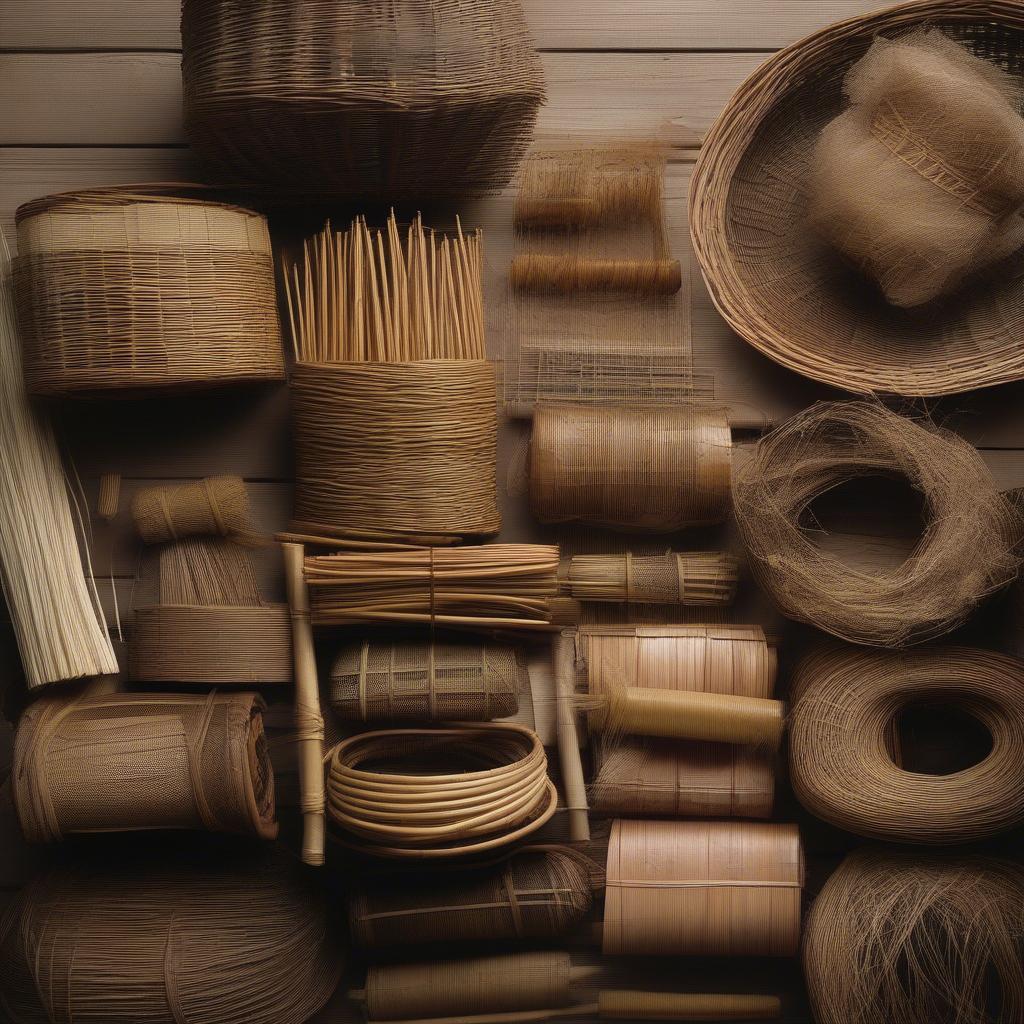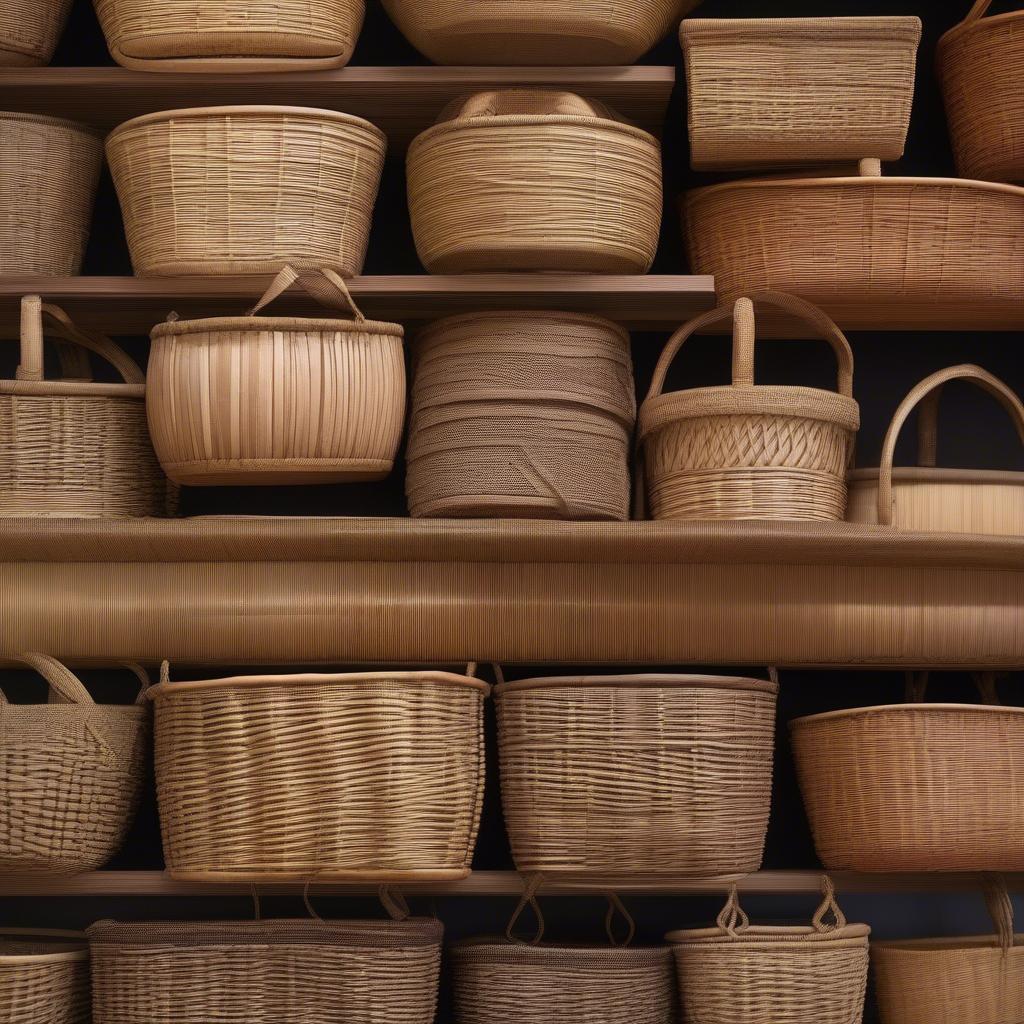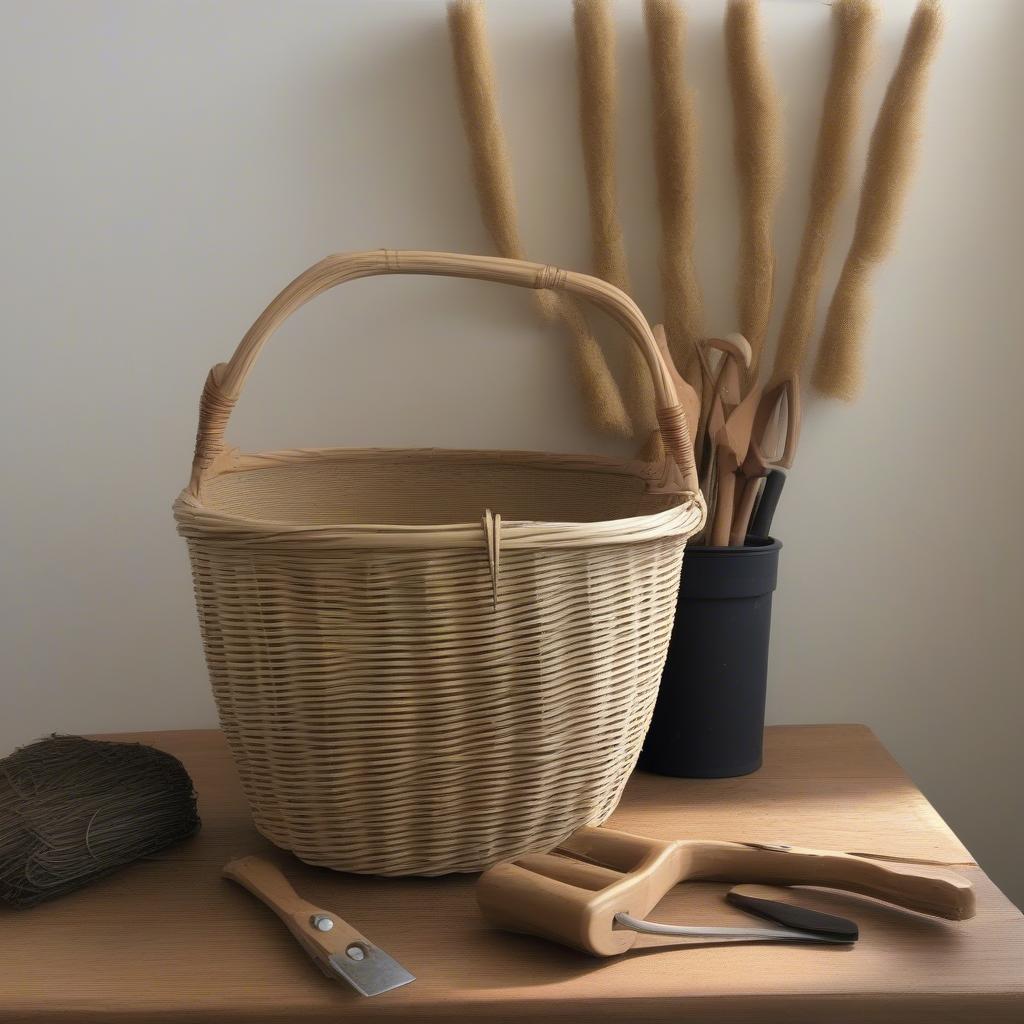Basket Weaving
Traditional Basket Weaving Materials: A Comprehensive Guide
Traditional Basket Weaving Materials have been used for centuries to create functional and beautiful baskets. From readily available reeds and grasses to more specialized materials like willow and bamboo, understanding these resources is key to appreciating the art and craft of basketry. This guide explores the diverse world of traditional basket weaving materials, their unique properties, and their cultural significance.
 Traditional basket weaving materials like willow, reed, and cane.
Traditional basket weaving materials like willow, reed, and cane.
Exploring Natural Basket Weaving Materials
Natural materials form the backbone of traditional basketry. Their availability, flexibility, and durability have made them essential resources for artisans across the globe. Let’s delve into some of the most popular choices:
- Willow: Known for its flexibility and strength, willow is a classic choice for basket weaving. It’s easily harvested and manipulated, making it suitable for both beginners and experienced weavers. makah indians basket weave often incorporates willow.
- Reed: Another readily available material, reed offers excellent durability and a rustic aesthetic. Its rigid structure makes it ideal for creating sturdy baskets and larger woven structures.
- Cane: Cane is known for its smooth texture and strength. It is often used in furniture making as well, showcasing its versatility and resilience.
- Bamboo: Prized for its strength and flexibility, bamboo is a popular choice in Asian basketry. Its unique segmented structure allows for intricate designs and patterns.
 Willow, reed, cane, and bamboo in basketry.
Willow, reed, cane, and bamboo in basketry.
Why Choose Traditional Materials?
In a world increasingly dominated by synthetic materials, traditional basket weaving materials continue to hold a special place. What makes them so appealing?
- Sustainability: Natural materials are biodegradable and renewable, making them an eco-friendly choice.
- Durability: Many traditional materials, like willow and cane, are incredibly durable, ensuring baskets last for generations.
- Aesthetic Appeal: The natural textures and colors of these materials lend a unique beauty to each basket.
- Cultural Significance: Traditional basket weaving often carries cultural significance, reflecting the history and traditions of different communities.
Weaving with plastic, like discussed in weaving plastic basket, offers a modern alternative, but it often lacks the unique character of natural fibers.
What are the Best Materials for Beginners?
For beginners, starting with readily available and easy-to-manipulate materials like reed or willow is recommended. These materials are forgiving and allow novices to practice basic weaving techniques without frustration. You can find numerous tutorials on youtube basket weave to get started.
“Starting with willow is like learning the alphabet of basket weaving,” says renowned basket maker, Anya Sharma. “Its flexibility allows for experimentation and builds a strong foundation for more complex techniques.”
 Beginner-friendly basket weaving materials.
Beginner-friendly basket weaving materials.
Regional Variations in Basket Weaving Materials
Different regions utilize the materials available to them, resulting in a diverse array of basketry traditions. For example, jean basket weaving utilizes repurposed denim. In Southeast Asia, rattan and bamboo are prevalent, while Native American tribes often use sweetgrass and cedar bark. These regional variations highlight the adaptability and creativity of basket weavers worldwide. Discussions on these variations can often be found in forums like the cambodian basket weaving forum.
“The beauty of basketry lies in its connection to place,” notes cultural anthropologist, Dr. Ben Carter. “Each basket tells a story of the materials available and the cultural practices of its maker.”
Conclusion: A Timeless Craft
Traditional basket weaving materials continue to inspire artisans and enthusiasts alike. Their inherent beauty, sustainability, and cultural significance make them a valuable resource for preserving this ancient craft. By understanding the unique properties of each material, we can appreciate the artistry and skill involved in creating these timeless treasures. Exploring traditional basket weaving materials opens a window into the rich history and cultural heritage of basketry worldwide.
FAQ
- What is the most common material for basket weaving?
- What is the strongest material for basket weaving?
- Are traditional basket weaving materials expensive?
- Where can I buy traditional basket weaving materials?
- What are the different types of weaving techniques used with traditional materials?
- How do I care for baskets made with natural materials?
- What are some good resources for learning traditional basket weaving?
Common Scenarios and Questions
- Scenario: A beginner looking for the easiest material to start with. Question: What’s the most beginner-friendly material for basket weaving?
- Scenario: Someone interested in sustainable crafting options. Question: Are there eco-friendly materials for basket weaving?
- Scenario: An experienced weaver looking for a challenging new material. Question: What are some advanced basket weaving materials to explore?
Further Exploration
You may also find these related articles helpful: “The History of Basket Weaving” and “Basket Weaving Techniques for Beginners.”
If you need any assistance, please contact us at Hanoi, Vietnam or Tech Avenue, Suite 12, San Francisco, CA 94105, USA. We have a 24/7 customer support team.
